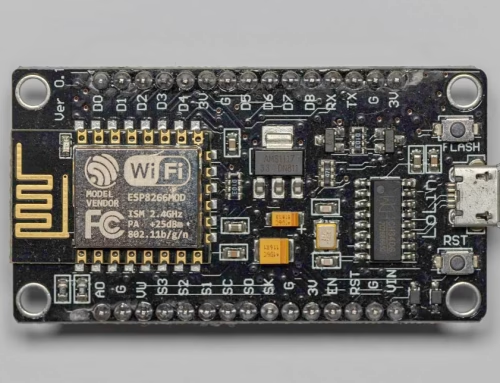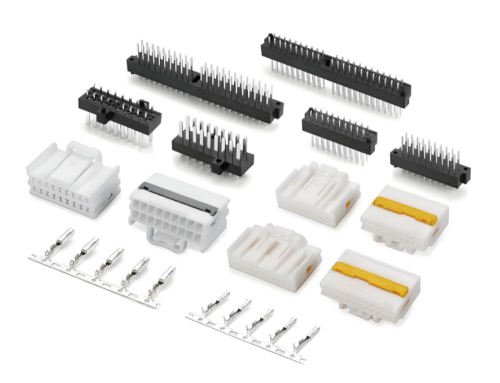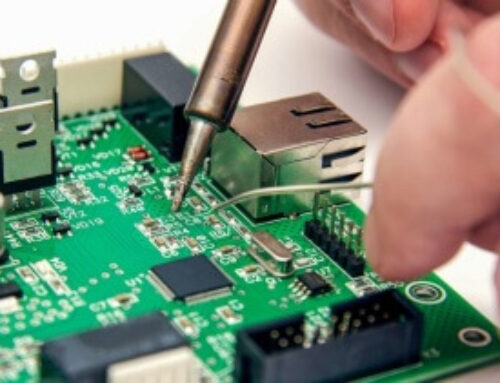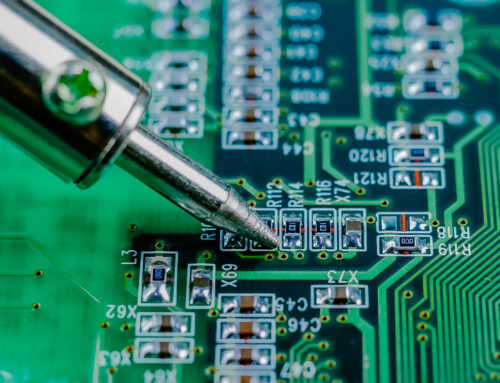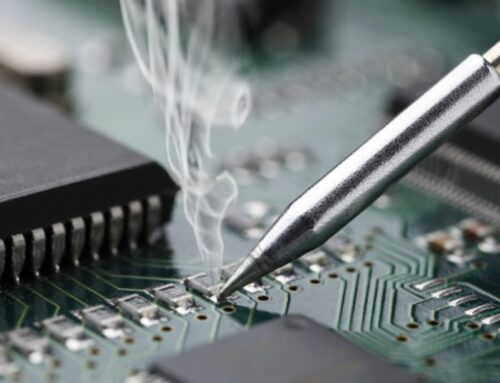Ultimate Guide to SMD LEDs with Built-in ICs: Types, Uses and Advantages
There are different types of SMD leds with integrated ICs. They have different functions and can be used to meet the needs of various people.

Table of Content
- Y&T Technology Development Co.,LtdProfessional distributor of electronic components
- 1.The Definition ofAn SMD LED with Built-in IC
- 2.The Traditional Structure of An SMD LED with Built-in IC
- 3.The Technical Advantages ofAn SMD LED with Built-in IC
- 4.The Types of An SMD LED with Built-in IC
- 5.The Core Functions of An SMD LED with Built-in IC
- 6.The Applications of An SMD LED with Built-in IC
- 7.Manufacturers of SMD LED with Built-inIC
- 8.SMD LED with built-in IC FAQs
- 9.Summary
When you think of the LED industry, what’s the first thing that comes to your mind? SMD LEDs are the answer. SMD LEDs, especially those with integrated ICs, have become a foundational element in optoelectronics. This technology is used in many consumer electronics, automotive, and industrial displays.
1.The Definition ofAn SMD LED with Built-in IC
An SMD LED with a built-in IC is a small optoelectronic part. The surface-mount chip package integrates an LED and a driver/control IC. Surface mount technology (SMT), which is used to create a three-in-one design, allows it to be directly soldered onto the PCB. This design integrates electronic drive, light emission, and intelligent controls into a single structure.
2.The Traditional Structure of An SMD LED with Built-in IC
2.1 Light-emitting layer
LED chip: This LED chip combines a GaN blue LED chip with a YAG phosphor. It emits white light and the range of color temperatures for white light is typically 2700K-6500K.
2.2 Control Layer
Driver ICs integrate key circuitry. They include a constant current source, a PWM dimming module, and a communication protocol decoder. The decoder typically uses SPI/I²C/single-wire interfaces for signal processing.
The integrated circuitry also features three protection layers: overvoltage, overcurrent, and thermal shutdown. These activate automatically when thresholds are met, safeguarding the circuit from damage.
2.3 Packaging structure
Substrate material: The substrate material of the lamp bead is usually high-thermal-conductivity epoxy resin and high-temperature co-fired ceramic.
The lamp bead is designed with an integrated array of microlenses. The beam angle of the lamp is 120deg+-10%. Light uniformity is more than 90%.
Here is a table comparing SMD LEDs with an integrated IC to SMD LEDs with an external IC.
| Comparison | SMD LED with built-in IC | SMD LED with External IC | |
|---|---|---|---|
| Reliability & Maintenance | Electromagnetic Interference (EMI) | Hermetic better resistance packaging shields (internal circuits). | Without proper shielding, you are more vulnerable to EMI. |
| Failure Handling | If the IC fails,you must replace the entire LED module. | Replace ICs that have failed. Reduce repair costs individually. | |
| Functional Performance | Control Flexibility |
Fixed functionality with pre-programmed features (e.g. dimming). | Flexible programming via external drivers. |
| Heat Dissipation | Advanced thermal design is required to deal with the heat generated by LED/IC. | Heat is distributed across the PCB with simpler thermal management. | |
| Power Efficiency | Energy loss can be reduced by reducing the length of signal paths; power management is optimized. | Power consumption may be increased by longer traces or separate drivers. | |
| Cost & Manufacturing | Assembly Cost | Reduced (fewer components on PCB). | Increased (higher soldering for separate ICs). |
| R&D & Component Cost | Integrated packaging increases initial R&D costs. | Lower component cost (standard off-the-shelf drivers and LED). | |
| Structural Design | Physical Form | Monolithic structure: a single package that performs both functions. | More PCB space is required for discrete components. |
| The integration of technology | LED chip and IC control are packaged in a single integrated chip. | The IC and LED chip are separate components on the PCB. |
If you want to know something about smd led strip vs cob led strip, you can click here.
3.The Technical Advantages ofAn SMD LED with Built-in IC
3.1 Reliability
Chip-level packaging integration is possible with SMD LEDs that have integrated ICs. It’s hard to go wrong. The polymer insulating layers of conventional LEDs can degrade due to the intermetallic compound (IMC) growth at the interface of the solder joints. Solder joint/lead aging issues can result.
3.2 Response Speed
SMD LEDs with built-in ICs deliver chip-level control precision. They boast a dimming response time under 100 nanoseconds. In contrast, traditional LEDs suffer slower speeds. Because external drivers introduce delays from signal conversion and PCB trace parasitics.
3.3 Production Yield
SMD LEDs with built-in ICs are manufactured using a fully automated SMT (Surface Mount Technology) process. It achieves a production yield exceeding 99.5%. They comply with IPC-A-610 Class 3 standards for quality and reliability.
The majority of traditional LED products, however, are produced using the automated reflow process. The production yield is 92% due to the inherent limitations in component alignment accuracy and temperature control.
SMD LEDs that have integrated ICs can be fully automated, and they are less likely to fail than traditional LED assemblies.
3.4 Control Accuracy
SMD LEDs with built-in ICs offer 16-bit digital dimming precision, while traditional LEDs have ±10% analog dimming accuracy.
3.5 Development Cycle
SMD LEDs with built-in ICs shorten the development cycle significantly. They support plug-and-play setup, with software configuration done in just 1–2 days. Traditional LEDs, however, need 6–8 weeks for development. This is largely due to mandatory IEC 62304 medical-grade system certification.
3.6 Circuit Complexity
Direct surface mounting of SMD LEDs that have integrated ICs eliminates all external components. BOM costs are reduced by 45%. The traditional LED setups require separate driver circuits that take up more than 30% of the PCB. This reduces the board space by 68% compared to discrete solutions.

common types of smd led with built-in ic
4.The Types of An SMD LED with Built-in IC
4.1 Classification according to Size and Form Factor
Here is a table of common SMD LED types.
| SMD LED Type |
Dimensions | Key Characteristics | Applications |
| 5050 | 5.0 × 5.0 | Higher power (0.2 – 0.5W) and high brightness | Used for RGB backlit displays, light strips, and decorative lighting. |
| 4020 | 4.0 × 2.0 | Balanced in size and brightness, with the power of 0.3 – 0.8W | Great for outdoor lighting, signboards, and commercial displays. |
| 3535 | 3.5 × 3.5 | Higher power (0.5 – 1.5W) | Applied in high-brightness lighting, car headlights and industrial lighting equipment. |
| 3528 | 3.5 × 2.8 | Low to medium power (0.06 – 0.2W) | Suitable for LED strips, general lighting, and LCD backlighting purposes. |
| 3030 | 3.0 × 3.0 | High power (1.0 – 3.0W) with high lumen output | For plant growth lamps, smart lighting, and high-performance commercial lighting fixtures. |
| 2835 | 2.8 × 3.5 | Compact but with higher power (0.2 – 0.5W) | Used in downlights, LED panels, and high-brightness light strips. |
| 0603 | 0.6 × 0.3 | Low power, consuming 0.02 – 0.06W | Ideal for wearables, smartphones and small – sized electronic devices. |
4.2 Classification of Color Capabilities
(1)RGB:
An RGB LED is a LED that combines red, green and blue to produce more than 16 millions of light shades.
(2)RGBW:
The chips of RGBW leds contain red, white, green, and blue. RGBW LEDs can produce an infinite number of colors by mixing the light from each chip in different ratios.
(3)Tunable White:
You are able to adjust the color temperature of a light through tunablewhite lighting. This technology allows you to change the color of a light from warm, neutral or cool at will.
(4)Single Color:
Unlike RGB LEDs or multicolor LEDs monochrome LEDs are unable to mix colors. They can only emit one fixed color, like red, green or blue.
4.3 Classification by Drive Current Specifications
(1)High-Current (200mA-1A):
The SMD LEDs with high current have a voltage range between 24-48V DC. The multi-chip package is available. Heat is generated by the high current. To ensure reliability and a long service life, a strong thermal management system is needed.
(2)Mid-Current (50-150mA):
The voltage range for SMD LEDs with medium current is 12-24V DC. The dimming is integrated PWM. It is a combination of brightness, energy efficiency and light efficiency. This is a common lighting source for general indoor lighting as well as decorative lighting.
(3)Low-Current (5-20mA):
Low-current SMD LEDs have a voltage range between 3-5V DC. The packaging is a miniature CSP/COB. Its luminous intensities are low but adequate to perform the basic functions. It is ideal for scenarios that require low power and strict energy consumption.
4.4 Classification by the Direction of Light Emission:
(1)Front Emission:
The front surface of the LED lamp beads is used to fix them onto the PCB. The light is sent at a right angle to the board. This design allows for a viewing angle that is approximately 140deg to 160deg all around.
(2)Side Emission:
The PCB edge is mounted with lamp beads. The light is emitted from the sides of the PCB, parallel to it. Light guide plates and other components can redirect the light. These screens are only available at a single viewing angle because the circuit board blocks a part of the light beam. They have a higher light transmission.

front emission vs side emission
4.5 Classification by Communication Protocol
(1)Single Wire Addressable:
This type of LED is controlled by a single data wire (e.g. daisy chain configuration).
(2)SPI (Serial Peripheral Interface):
High-speed communication is possible with SPI SMD leds. The SPI LEDs use independent clocks to control the timing.
(3)I²C (Inter-Integrated Circuit):
An I²C LED is an LED regulated by the I²C communication protocol, allowing it to link with a circuit. It uses the I²C bus—a two-wire serial interface—to handle addressing and control. Popular examples include modules driven by the PCA9685.
5.The Core Functions of An SMD LED with Built-in IC
5.1 High-Density Displays
These LEDs are characterized by their ultra-compact packaging, as well as the integrated driver ICs. The LEDs are able to achieve pixel pitches of P0.4. This is perfect for high resolution displays.
5.2 Dynamic lighting effects
RGB color-mixing ICs can create 16,7 million different colors. The ICs have a response time of under 1 millisecond, allowing for smooth color changes.
5.3 Environment Adaptability
They can also detect the ambient light level. They can then adjust the brightness of LEDs automatically based on ambient light levels.
5.4 External Driver Free Operation
These SMD LEDs have constant-current ICs built in. This LED can be powered directly by 3-5V power sources. This setup eliminates the need for external driver circuits.
6.The Applications of An SMD LED with Built-in IC
6.1 Industry IoT
SMD LEDs with high intensity and strobe ICs. They are excellent at identifying items quickly on conveyor belts. These sensors are used in many factory automation systems. WiFi/Bluetooth is available on smart bulbs and switches with embedded ICs. Users can control the color and brightness of their lights via an app. SMD LEDs and spectrum-tuning chips are used in vertical farming setups to boost plant growth. Planters can, for example, adjust the ratio between red and blue light to enhance photosynthesis.

common applications of smd led with built-in ic
6.2 Aviation & Aerospace
Radiation-hardened SMD LEDs with integrated ICs are used in aircraft instrument panels. This can provide reliability under harsh conditions, such as extreme temperatures and radiation at high altitudes. Low-power SMD LEDs are used for cabin signs and escape route markers. They are designed to operate continuously with fail-safe ICs.
6.3 Consumer Electronics
SMD LEDs are able to dim dynamically thanks to their built-in IC. It also provides uniform brightness as well as precise local dimming. It is used for smart devices, wearables, and appliances like TVs.
6.4 Medical & Healthcare
The SMD LEDs combined with constant current ICs provide flicker-free illumination. This makes them ideal for surgical lights and cameras. These LEDs are used in medical devices along with light sensors. They can track accurately blood oxygen levels and pulse rates. This ensures accurate health monitoring.
6.5 Automotive & Transportation
The SMD LEDs that have ICs built in have low power consumption and multi-color effects. The LEDs can create flowing effects and transmit dynamic signals. SMD LEDs with high densities also produce clearer visual effects. This type of LED is used in interior and exterior lighting, as well as instrument panel displays.
6.6 Commercial & Architectural Lighting
These SMD RGB/RGBW LEDs are equipped with color-mixing ICs. These LEDs are ideal for decorative displays, storefront signage, and eye-catching billboards. You can use them to create the atmosphere you desire. Jewelry shops and museums use SMD LEDs that have constant-current ICs. These LEDs are a great way to make your products stand out without damaging them with heat.
7.Manufacturers of SMD LED with Built-inIC
The world is full of SMD LEDs with (Built-in) IC manufacturers. This list covers the most representative manufacturers.
Sanan Optoelectronics (China)
Jufei Optoelectronics (China)
HC SemiTek (China)
Seoul Semiconductor
Worldsemi (China)
AMS OSRAM
Samsung LED
BOE (China)
Lumileds
Nichia
…
8.SMD LED with built-in IC FAQs
9.Summary
The integration of SMD LEDs with built-in ICs is achieved at the chip level. The system is a closed-loop power delivery, driving, and intelligent control in a small footprint. This technological breakthrough will revolutionize the cutting edge of modern technology. Wait and see.
related Posts
Contact us
WhatsApp: +86-13570802455
Wechat: +86-13570802455
Teams: alek_youte
Email: sales@yt-electronic.com

